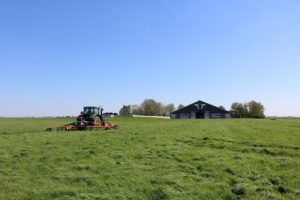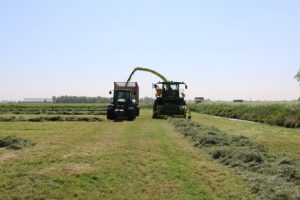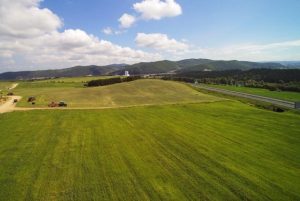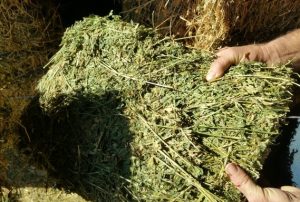It is spring time in the Northern Hemisphere: revival after winter. As Bles Dairies is active around the world, our specialists meet all kinds of cattle feed. Nutrition, and especially roughages, are crucial for milk production and dairy development. Only when the cattle is provided with high quality feed they can grow and successfully produce milk. What does the start of spring time mean for different regions in terms of roughage? We present a few examples of roughage situations around the world.
In Holland after the winter the first mowing takes place, usually in May. The first cut is important; in terms of both quantity as quality, the first cut usually accounts for a large contribution of the winter feed ration of the herd. For this, and for financial reasons the dairy farmer strives for an early and good production, so there will be a maximum yield for the entire growing season.
This year the weather was too cold for a couple of weeks prior to the first cut, resulting in poor growth. Frosty nights reduce the phosphate uptake of the soil, which leads to a purple coloring of the grass. Besides, when the nights are near freezing, the protein levels in grass are lower. However, sugars tend to be very high in spring, which is conducive to the preservation of the ensiled grass.
With respect to the type of the grass, in the Netherlands 90% of the grass varieties are English Ryegrass or Italian Ryegrass, both with high digestibility of NDF. This assures a high dry matter intake and a lot of milk from roughage. In contrast, the grass from many tropical regions is often a limitation for the milk production because of low fiber digestibility.
In Northeastern China the growing season is shorter, but mid spring the grass starts to grow. However, most temperate grasses need reseeding every year. There are grasses which always survive the winter, but these are usually less digestible apart from clover and alfalfa/luzerne. Also, grass is quite rare in Northern China. Grazing is not practical for very large herds but grass gets more and more popular. This is because continuous growing of corn silage has its limitations and grass will increase the organic matter content of the soil and break the sequence of pests in corn silage. Bles Dairies has introduced new varieties in this region which can have similar feed quality as obtained in the Netherlands.
Our nutrionist Ben Braakman also knows the situation in Greece very well. In Greece, by this time the first cut of alfalfa has often been completed and put into hay. Most farmers leave the bales for some time before starting to feed them. Also in Greece, Italian Ryegrass is popular because it can grow all winter. However, in early spring the land is often too wet to harvest early enough. Therefore, the yield is high but the protein content is often low.
What about Russia? In Southern Russia the weather was cold for a long time and crops survived the winter but didn’t grow much. Late snow delayed the spring land works. In the continental climate with hot summers, grass is not always a good choice. Alfalfa or Sudan grass would do better.
These are just a small selection of a lot of different situations we encounter around the world. In many countries grazing is a cheaper option than cutting for silage, especially in long growing seasons in Uruguay and New Zealand. Although this saves costs, farmers need to make sure they keep sufficient grass for the winter period. For North-Western Europe the (quality of the) first cut silage is a determining factor to achieve a high production also in winter.
In this perspective, the Netherlands has an outstanding position. Dutch roughage is of a high quality and in the Netherlands we have a long growing season. To illustrate: an average cow in the Netherlands produces approximately 17 kg of milk (FPCM) with 9 kg dm of grass silage and 5 kg dm of corn silage. Great results that we are definitely satisfied with. However, in countries with less favorable climates and/or poorer roughage quality, Bles Dairies has experience in achieving optimal results with the available resources. Everything to produce good nutrition and thus, a healthy and profitable herd!




